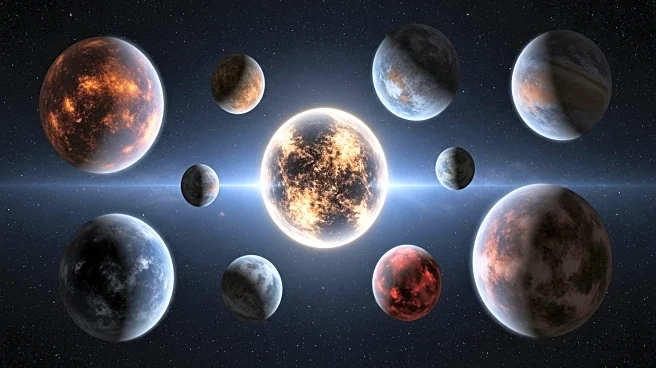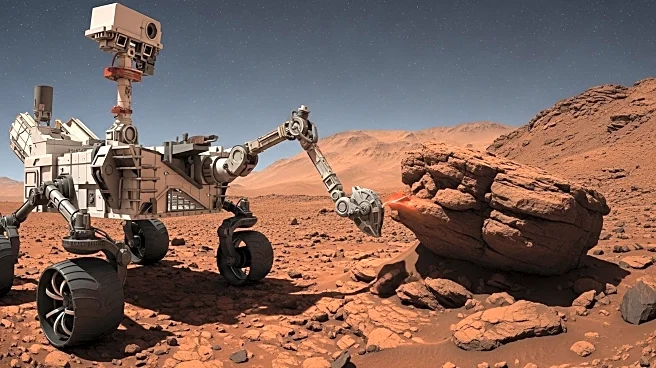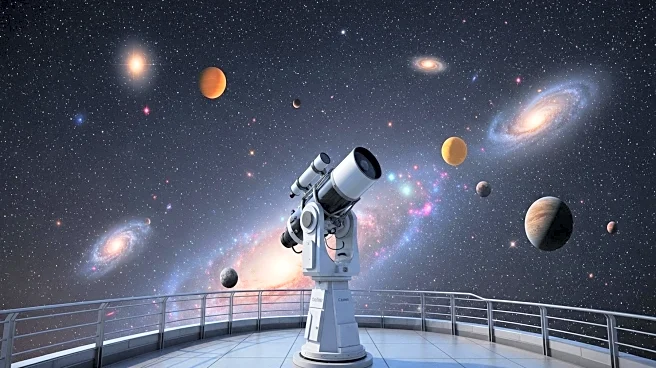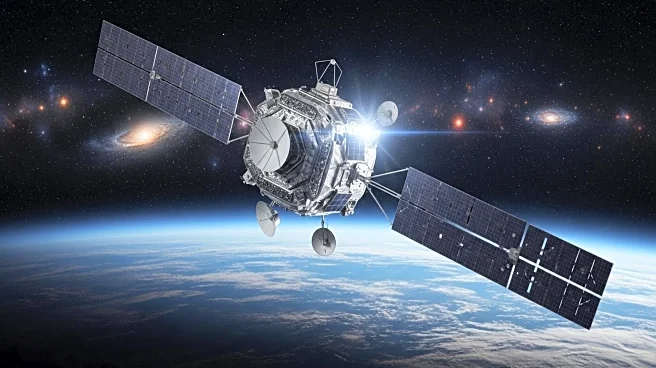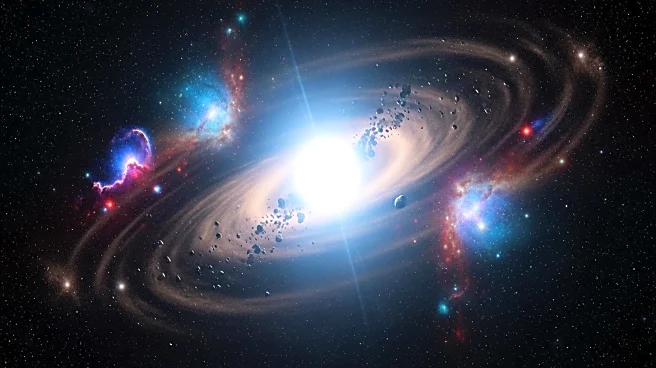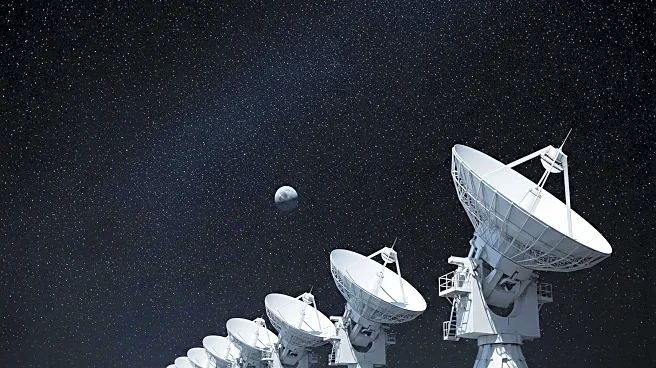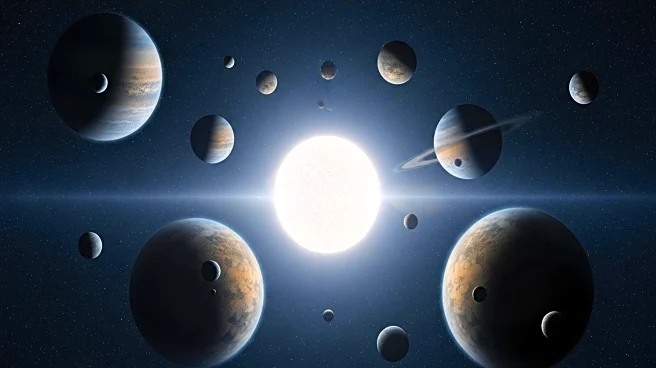What's Happening?
NASA has confirmed the existence of over 6,000 exoplanets, marking a significant milestone in the search for worlds beyond our solar system. This achievement is the result of contributions from space telescopes such as Kepler, TESS, and the James Webb Space Telescope (JWST), which have revolutionized the study of planetary systems. The confirmed exoplanets include a diverse array of types, from gas giants to rocky super-Earths, many of which are located in habitable zones where liquid water might exist. The JWST has been particularly instrumental, capturing atmospheric data from distant worlds and confirming carbon-rich exoplanets that suggest complex chemistries potentially conducive to life.
Why It's Important?
The confirmation of over 6,000 exoplanets represents a leap forward in our understanding of planetary formation and the potential for habitable worlds. This surge in discoveries challenges existing models and prompts new debates about the compositions and atmospheres of these planets. For the aerospace and astrophysics industries, the findings highlight the importance of advanced instrumentation and data analysis techniques. The potential for discovering habitable planets fuels future missions and investments in space exploration, with implications for understanding our place in the cosmos and the possibility of life beyond Earth.
What's Next?
NASA plans to continue its exploration of exoplanets with upcoming missions like the Habitable Worlds Observatory, which aims to directly image Earth-like planets. The ongoing development of AI-driven tools will aid in processing the vast amount of data generated by these discoveries. As the search for habitable worlds progresses, collaborations across international teams and private space firms are expected to accelerate, potentially leading to new breakthroughs in exoplanet science.

